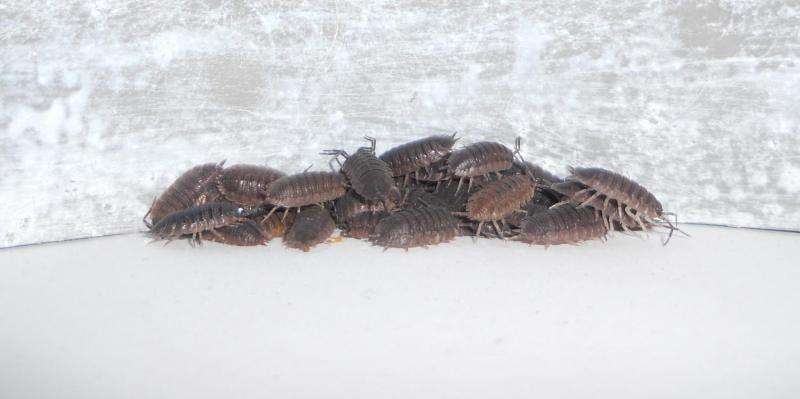Being calm is contagious?

Woodlice are able to calm their excited neighbors according to findings made by Pierre Broly and Jean-Louis Deneubourg of the Free Brussels University (Belgium).
Woodlice, familiar to the amateur gardeners, are easily observable living in groups sheltered under stones or barks. Research published in PLOS Computational Biology shows how a 'contagion' between the different behavioral states of woodlice may govern the stability of their groups.
By combining experiments and mathematical model, the authors show that calm individuals reduced the excitation of their neighbors which become calm in their turn. It results from this social influence that the bigger the group, the greater the proportion of calm individuals. Therefore the groups are more cohesive and slowly disperse when the group is perturbed.
Harmless and easy to raise, the woodlice already represent a pedagogical model in many schools for the study of behaviors. The simple experimental procedure presented in this study can be easily reproducible with children in order to introduce the basic concepts of collective behavior and social interaction in group-living animals.
More information: PLOS Computational Biology: journals.plos.org/ploscompbiol … journal.pcbi.1004290
Journal information: PLoS Computational Biology
Provided by Public Library of Science
















